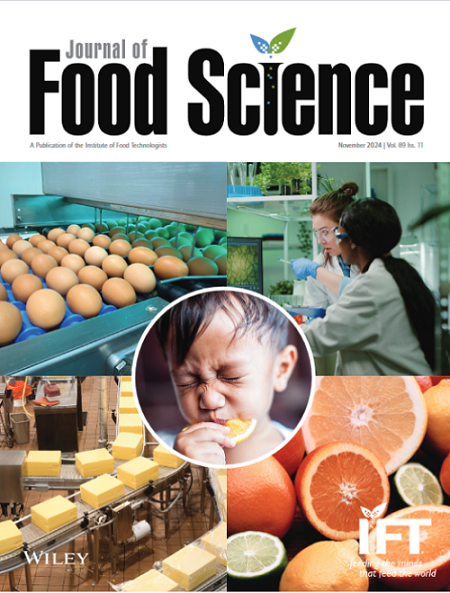Convective drying of mango preceded by incorporation of isomaltulose by standard and pulsed vacuum osmotic dehydration
Abstract
Isomaltulose, known as Palatinose, is a low-glycemic carbohydrate commonly used in prolonged sports activities. In the present work, isomaltulose was incorporated in mango slices by standard osmotic dehydration (OD) and pulsed vacuum OD (PVOD) at 45°C. Vacuum was applied during the first 10 min of PVOD. Both fresh and osmotically treated samples were convectively dried (60°C, 1.5 m/s). The osmodehydrated and dried products were evaluated concerning hygroscopic behavior, color parameters, volumetric shrinkage, ascorbic acid content, and antioxidant activity. Isomaltulose incorporation was higher in PVOD (13.86%) than in OD (11.01%). Treated samples exhibited lower water diffusivity and longer drying times. Hygroscopic studies showed Type II and III sorption isotherms. Dried mango osmotically pretreated, mainly by PVOD, was more stable than the fresh product submitted to drying directly. PVOD followed by drying did not show significant color change compared to the fresh product submitted to drying directly, unlike what was observed for OD followed by drying. OD or PVOD, followed by drying, resulted in lower shrinkage (61.8%–65.6%) than direct drying (77.71%). However, reductions in ascorbic acid and antioxidant activity were observed in dried pretreated samples (at least 50% lower antioxidant activity than dried fresh fruit). The dried mango with isomaltulose incorporated by PVOD effectively produces dried mango with low glycemic index carbohydrate, minimal color change, and stability.
Practical Application
The studied process resulted in a stable, dried product with low glycemic carbohydrates incorporated. It is an available source of this carbohydrate. The isothermal study showed that the incorporation of isomaltulose made the dried mango even more stable.

 求助内容:
求助内容: 应助结果提醒方式:
应助结果提醒方式:


